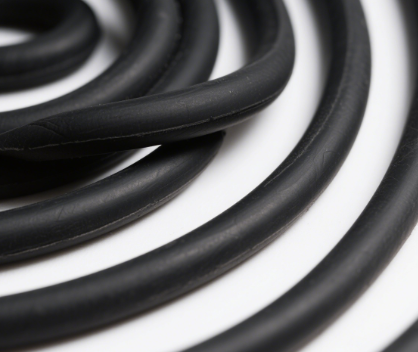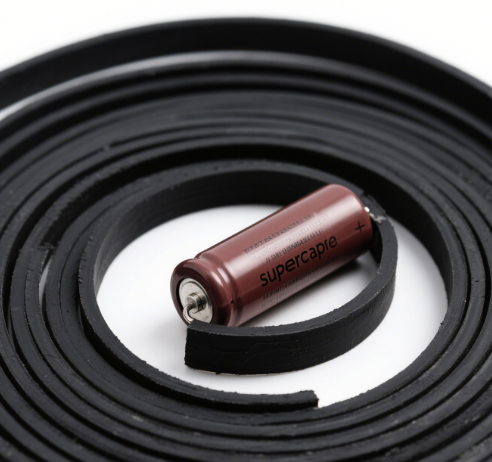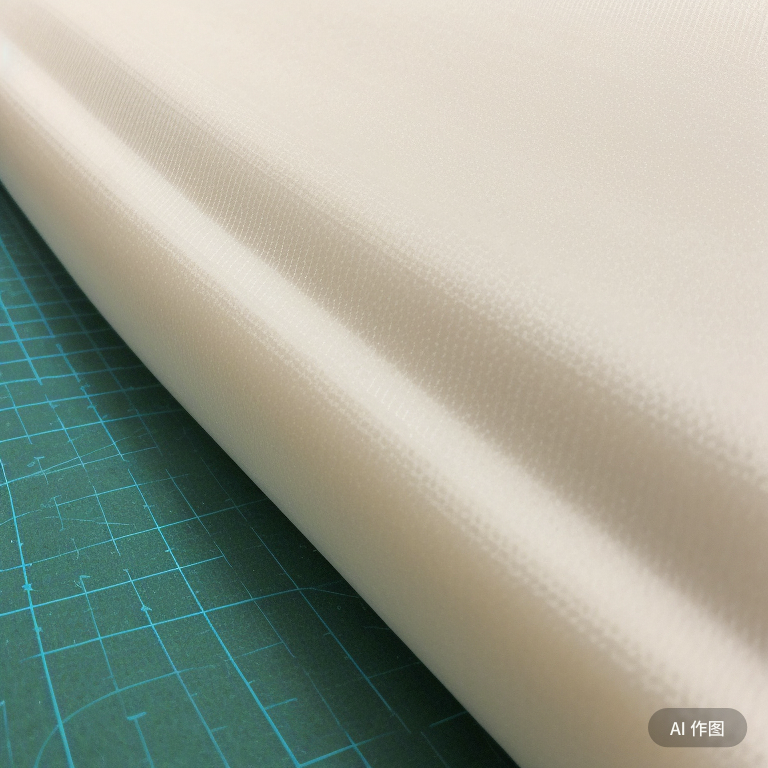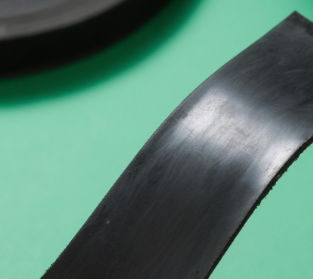The Rising Star in Automotive Materials Foamed Silicone for Lightweighting and Fire Safety
The Evolution of Automotive Materials
Over the past century, the automotive industry has witnessed a remarkable transformation in the materials used for vehicle manufacturing. From the early days of wooden carriages to the modern high – tech automobiles, the journey of automotive materials has been nothing short of revolutionary.
In the nascent stages of the automotive era, cars were primarily constructed using wood for their frames and basic metal components for the mechanical parts. However, as the demand for speed, durability, and safety grew, the industry quickly shifted towards the use of steel. Steel offered higher strength and better formability, enabling the production of more robust and reliable vehicles. This material dominated the automotive landscape for decades, forming the backbone of most car bodies and engines.
With the advent of environmental concerns and the need for improved fuel efficiency, the focus gradually shifted towards lighter materials. Aluminum emerged as a popular alternative due to its low density and high corrosion resistance. It found applications in various parts of the vehicle, from engine components to body panels, significantly reducing the overall weight of the car without sacrificing too much on strength.
In recent years, the push for even greater fuel savings and enhanced performance has led to the exploration of advanced materials such as carbon fiber composites, high – strength steels, and various polymers. These materials not only contribute to vehicle lightweighting but also offer improved safety features and better handling characteristics.
However, as cars become lighter, the issue of fire safety has come to the forefront. In the event of an accident or an electrical malfunction, a vehicle’s interior materials can quickly become a source of fire, endangering the lives of passengers. This is where the need for flame – retardant materials becomes crucial.
Among the various flame – retardant materials being used in the automotive industry today, foamed silica gel stands out as a game – changer. It combines the benefits of light weight with excellent flame – retardant properties, making it an ideal choice for a wide range of automotive applications.
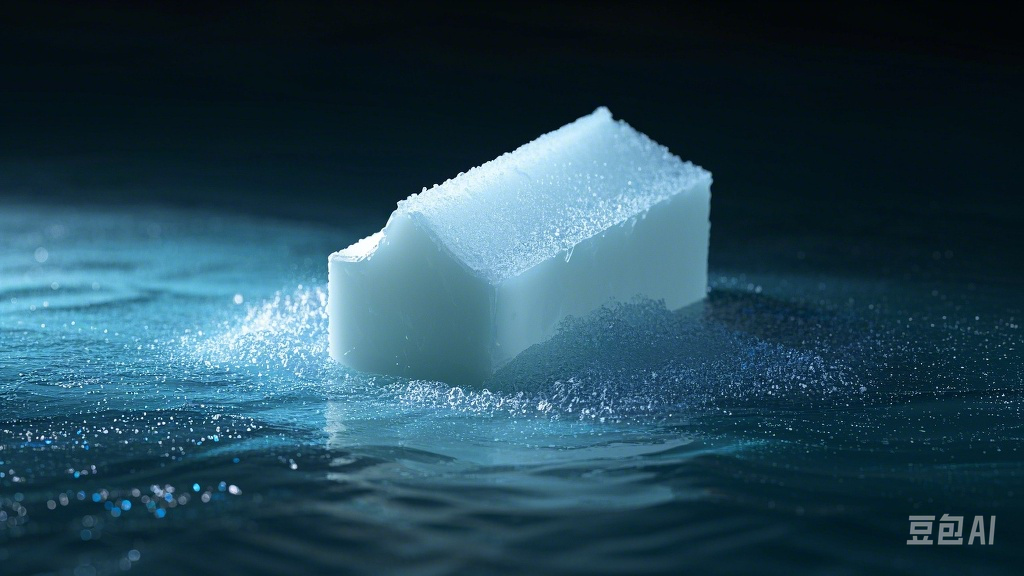
Figure 1: The Development of Automotive Materials
Understanding Automotive Lightweighting
Significance of Lightweighting
Automotive lightweighting has emerged as a critical factor in modern vehicle design, driven by a combination of environmental, performance, and economic considerations. From an environmental perspective, reducing a vehicle’s weight directly contributes to improved fuel efficiency. Research shows that for every 10% reduction in vehicle weight, fuel efficiency can increase by 6 – 8%. This is because a lighter car requires less energy to move, reducing the load on the engine and thus consuming less fuel. As a result, greenhouse gas emissions are also significantly reduced. For instance, a typical mid – size sedan that weighs 1500 kg might emit around 150 grams of CO2 per kilometer. If its weight is reduced by 150 kg (10%), the CO2 emissions could potentially drop to around 138 grams per kilometer, making a notable contribution to global efforts to combat climate change.
In terms of performance, a lighter vehicle offers enhanced handling and acceleration. The reduced mass means that the vehicle can change direction more quickly and respond more nimbly to the driver’s inputs. In sports cars, lightweighting is often a key strategy to improve lap times on the track. For example, the Porsche 911 GT3, which features extensive use of lightweight materials such as carbon fiber, can accelerate from 0 to 100 km/h in just over 3 seconds. Its light weight not only contributes to its rapid acceleration but also allows for better braking performance, as there is less momentum to overcome.
Traditional Lightweight Materials and Their Limitations
Over the years, several materials have been employed in the pursuit of automotive lightweighting, each with its own set of characteristics and limitations.
Aluminum Alloys: Aluminum has been a popular choice for lightweighting due to its relatively low density, which is about one – third that of steel. It offers good corrosion resistance and is highly recyclable. In many modern cars, aluminum is used in components such as engine blocks, body panels, and suspension parts. For example, the Audi A8 has an aluminum – intensive body structure, which helps to reduce its weight significantly compared to a traditional steel – bodied vehicle. However, aluminum alloys also have limitations. They are generally more expensive than steel, both in terms of material cost and processing. The manufacturing processes for aluminum, such as casting and forming, often require specialized equipment and techniques. Additionally, the strength – to – weight ratio of aluminum is not as high as some other advanced materials. In high – stress applications, aluminum components may need to be larger or thicker to meet the required strength standards, partially offsetting the weight – saving benefits.
High – Strength Steels: High – strength steels have been developed to provide better strength while still being relatively lightweight compared to traditional steels. They are used in critical structural components of a vehicle, such as the chassis and safety cages. These steels can withstand high levels of stress and impact, enhancing the vehicle’s safety performance. For example, in some luxury sedans, high – strength steel is used in the door beams and floor pans to improve crash – worthiness. However, high – strength steels are still heavier than materials like aluminum or carbon fiber. Also, they can be more difficult to form during the manufacturing process, requiring higher forces and more precise control. This can increase production costs and limit design flexibility.
Carbon Fiber Composites: Carbon fiber composites are known for their extremely high strength – to – weight ratio. They are significantly lighter than steel and aluminum while offering excellent stiffness and strength. Carbon fiber is commonly used in high – performance and luxury vehicles, especially in parts like the body panels, spoilers, and chassis components. For example, the McLaren P1, a supercar, extensively uses carbon fiber in its construction, contributing to its low weight and high – performance capabilities. However, carbon fiber composites are extremely expensive to produce. The manufacturing process involves complex chemical reactions and high – temperature curing, which require specialized facilities and skilled labor. This high cost has limited their widespread use in mainstream vehicles, making them mainly a choice for high – end and low – volume production models.
In conclusion, while these traditional lightweight materials have made significant contributions to automotive design, their limitations in terms of cost, performance, and processing have created a need for new materials, such as foamed silica gel, to address the challenges of automotive lightweighting and fire safety more effectively.

Figure 2: Traditional Lightweight Materials
The Marvel of Foamed Silicone
What is Foamed Silicone?
Foamed silicone, also known as silicone foam, is a remarkable material that has found its way into a wide range of industries, especially the automotive sector, due to its unique combination of properties. At its core, foamed silicone is made from silicone rubber, which is a type of synthetic rubber composed of silicon – oxygen polymers. The basic raw materials include silicone polymers, fillers, cross – linkers, and most importantly, foaming agents.
The manufacturing process of foamed silicone begins with the preparation of the silicone rubber compound. Silicone polymers are mixed with various additives such as reinforcing fillers (like silica) to enhance mechanical properties, cross – linkers to create a three – dimensional network structure, and a carefully selected foaming agent. The foaming agent is the key component that transforms the silicone rubber into a foamed material. There are two main types of foaming agents: physical and chemical. Physical foaming agents, such as certain hydrocarbons or low – boiling – point liquids, expand when heated, creating bubbles within the silicone matrix. Chemical foaming agents, on the other hand, decompose upon heating, releasing gases like nitrogen or carbon dioxide, which also cause the silicone to expand.
Once the mixture is prepared, it is subjected to heat and pressure in a mold. During this curing process, the cross – linkers react, bonding the silicone polymers together, while the foaming agent activates, creating a multitude of tiny, uniformly distributed bubbles. The result is a lightweight, porous material with a cellular structure similar to that of a sponge but with the unique properties of silicone. This transformation from a solid – like silicone rubber to a foamed structure gives foamed silicone its characteristic softness, flexibility, and low density, making it a far cry from the dense, rigid nature of traditional solid silicone.
Key Properties of Foamed Silicone
Lightweight Nature
One of the most prominent features of foamed silicone is its extremely low density. The density of foamed silicone typically ranges from 0.1 to 0.5 g/cm³, which is significantly lower than that of solid silicone (around 1.1 – 1.3 g/cm³) and many other traditional automotive materials. For example, compared to aluminum, which has a density of about 2.7 g/cm³, foamed silicone is more than five times lighter. This lightweight nature makes it an ideal choice for automotive applications where reducing weight is crucial.
In cars, foamed silicone is used in various components to achieve significant weight savings. For instance, in the interior, it can be found in seat cushions, headrests, and door panels. By replacing heavier materials with foamed silicone in these areas, the overall weight of the vehicle can be reduced by a considerable amount. A typical car seat made with traditional materials might weigh around 10 – 15 kg, but by using foamed silicone in the cushioning, the weight can be reduced by 2 – 3 kg per seat. Considering a vehicle with multiple seats, this weight reduction can have a cumulative effect on the overall vehicle weight, contributing to better fuel efficiency and performance.
Fire – Retardant Capabilities
Foamed silicone exhibits excellent fire – retardant properties, making it an essential material for ensuring the safety of automotive interiors. The fire – retardant mechanism of foamed silicone is based on several factors. Firstly, silicone has a high thermal stability due to its silicon – oxygen backbone. When exposed to heat or fire, the silicone structure does not break down easily like many organic polymers. Instead, it forms a stable silica – based char layer on the surface. This char layer acts as a physical barrier, preventing the further penetration of heat, oxygen, and flammable gases, thus slowing down the combustion process.
In terms of quantifiable fire – retardant performance, foamed silicone has a high oxygen index. The oxygen index is a measure of the minimum concentration of oxygen in a mixture of oxygen and nitrogen that will support combustion. For foamed silicone, the oxygen index is typically above 30, which means it is a difficult – to – burn material. In comparison, many common automotive interior materials like polyurethane foam have an oxygen index in the range of 18 – 22, making them much more flammable.
The vertical – burning test is another important indicator of a material’s fire – retardant capabilities. In a vertical – burning test, a sample of the material is held vertically and exposed to a flame for a specified time. Foamed silicone often achieves a V – 0 rating in such tests, which means that it stops burning within a few seconds after the flame is removed and does not drip flaming particles. This is in contrast to some other materials that may continue to burn, drip, or produce large amounts of smoke, increasing the risk of fire spread and endangering passengers.
Other Outstanding Features
- Temperature Resistance
Foamed silicone can withstand a wide range of temperatures, from extremely low to very high. It can operate effectively in temperatures as low as – 100°C and as high as 300°C continuously, and can even endure short – term exposure to temperatures up to 500°C. In automotive engines, where components are exposed to high – temperature environments, foamed silicone can be used in gaskets, seals, and insulation materials. For example, in the engine compartment, it helps to prevent heat transfer from the engine to other parts of the vehicle, protecting sensitive electronics and reducing the risk of heat – related damage. At low temperatures, such as during cold – weather driving, foamed silicone maintains its flexibility and mechanical properties, ensuring that it can still perform its functions effectively, unlike some materials that become brittle and lose their sealing or insulating capabilities.
- High Air and Water Vapor Barrier Properties
It has excellent air and water vapor barrier properties. In automotive applications, this is crucial for maintaining the integrity of various systems. For example, in the battery compartments of electric vehicles, foamed silicone seals are used to prevent the ingress of moisture, which could cause corrosion or short – circuits in the battery cells. The high – air – tightness property also makes it useful in sound – deadening applications. By creating an air – tight seal around certain components, it helps to reduce the transmission of sound waves, contributing to a quieter and more comfortable driving experience.
- Electrical Insulation
Foamed silicone is an excellent electrical insulator. Its high electrical resistivity, typically in the range of 10¹² – 10¹⁵ ohm – cm, makes it suitable for use in electrical components and wiring systems in cars. In the complex electrical systems of modern vehicles, which are filled with a large number of wires, sensors, and electronic control units, foamed silicone can be used to insulate electrical connections, preventing electrical leakage and short – circuits. This is especially important for ensuring the safety and proper functioning of the vehicle’s electrical systems, which are becoming increasingly sophisticated with the development of advanced driver – assistance systems and electric vehicle technologies.
- Physiological Inertness
It is physiologically inert, which means it is non – toxic, non – allergenic, and does not react with biological substances. This property is important for automotive applications where the material may come into contact with passengers, such as in the interior components. For example, in the manufacture of steering wheels, dashboard pads, and armrests, the use of foamed silicone ensures that passengers are not exposed to harmful substances, even in the event of long – term contact or in case the material is accidentally ingested (although this is highly unlikely). It also makes foamed silicone a more environmentally friendly choice as it does not release harmful chemicals during its production, use, or disposal.
| Property | Description |
| Density | Low, typically 0.1 – 0.5 g/cm³ |
| Fire – Retardant | High oxygen index (above 30), V – 0 rating in vertical – burning test |
| Temperature Resistance | Operates from – 100°C to 300°C continuously, can withstand short – term up to 500°C |
| Air and Water Vapor Barrier | Excellent, helps prevent moisture ingress and sound transmission |
| Electrical Insulation | High electrical resistivity, 10¹² – 10¹⁵ ohm – cm |
| Physiological Inertness | Non – toxic, non – allergenic, does not react with biological substances |
Table 1: Key Properties of Foamed Silicone
Applications of Foamed Silicone in Cars
Battery Systems
In modern electric vehicles, the battery system is the heart of the vehicle, and its safety and stability are of utmost importance. Foamed silicone plays a crucial role in battery systems, especially in lithium – ion battery packs.
One of the primary applications is in the sealing of the battery housing. Lithium – ion batteries are highly sensitive to moisture and external contaminants. Foamed silicone seals are used to create a tight and reliable seal around the battery housing, preventing the ingress of water, dust, and other particles. This not only protects the battery cells from corrosion and short – circuits but also helps to maintain the overall integrity of the battery system. For example, in a typical electric car battery pack, foamed silicone gaskets are placed between the different components of the battery enclosure, ensuring that the internal environment of the battery remains clean and dry even in harsh driving conditions.
Moreover, foamed silicone provides excellent cushioning and shock – absorption properties for the battery cells. During the operation of the vehicle, the battery pack is subjected to various vibrations and mechanical shocks. The soft and flexible nature of foamed silicone allows it to absorb these impacts, protecting the delicate battery cells from physical damage. This is essential for maintaining the long – term performance and lifespan of the battery. By reducing the risk of internal damage to the cells, foamed silicone helps to prevent potential thermal runaway scenarios, which can lead to battery overheating, combustion, and even explosion.
In terms of fire safety, the fire – retardant properties of foamed silicone are a significant advantage. In the event of an electrical malfunction or an external fire source, the foamed silicone can act as a fire – barrier, slowing down the spread of flames and heat within the battery pack. It forms a protective char layer when exposed to high temperatures, which inhibits the release of flammable gases from the battery cells and reduces the likelihood of a full – scale fire. This significantly improves the overall safety of the vehicle, protecting both the passengers and the vehicle itself from the potentially catastrophic consequences of a battery – related fire.
Interior Components
Foamed silicone has found extensive applications in automotive interior components, enhancing both the comfort and safety of passengers.
In car seats, foamed silicone is used in the cushioning material. Its lightweight and soft nature provide excellent comfort, conforming to the body shape of the passengers and reducing pressure points. Compared to traditional foam materials, foamed silicone offers better breathability, which helps to keep the seats cool and dry, even during long – distance driving. This is especially beneficial in hot weather conditions. For example, some high – end luxury cars use foamed silicone in their seat cushions to provide a more luxurious and comfortable driving experience. The use of foamed silicone also contributes to weight reduction in the vehicle, as it is lighter than many other cushioning materials.
In addition to seats, foamed silicone is used in car carpets. It helps to improve the sound – deadening and insulation properties of the vehicle interior. By reducing the transmission of external noise, such as road noise and engine noise, foamed silicone creates a quieter and more peaceful driving environment. It also provides thermal insulation, helping to keep the interior temperature stable. This not only enhances the comfort of the passengers but also reduces the energy consumption of the vehicle’s heating and cooling systems.
Door interior panels also benefit from the use of foamed silicone. It can be used in the padding and insulation layers of the door panels. The foamed silicone padding provides a soft and comfortable surface for passengers to rest their arms on, while the insulation properties help to reduce heat transfer and noise infiltration. This contributes to a more pleasant and energy – efficient interior environment.
Overall, the use of foamed silicone in automotive interior components not only improves the comfort of passengers but also contributes to the overall safety and energy – efficiency of the vehicle.
Sealing and Gasketing
Foamed silicone is widely used in automotive sealing and gasketing applications due to its outstanding sealing performance and high – temperature resistance.
In the automotive industry, proper sealing is essential to ensure the smooth operation of various systems and to protect the vehicle’s components from external elements. Foamed silicone is used in door seals, window seals, and sunroof seals. Its soft and flexible nature allows it to conform to irregular surfaces, creating a tight seal that prevents water, dust, and air from entering the vehicle interior. This not only improves the comfort of the passengers by reducing drafts and noise but also protects the interior components from corrosion and damage. For example, in a modern sedan, the door seals made of foamed silicone ensure that the interior remains dry and quiet even during heavy rain or high – speed driving.
In the engine compartment, foamed silicone is used in gaskets for engine covers, oil pans, and other components. The engine operates at high temperatures, and traditional sealing materials may degrade or lose their effectiveness over time. Foamed silicone, with its excellent high – temperature resistance, can withstand the extreme heat generated by the engine without losing its sealing properties. It helps to prevent oil leaks, coolant leaks, and the ingress of dirt and debris into the engine, ensuring the reliable operation of the engine and extending its service life.
The high – air – tightness and water – tightness properties of foamed silicone make it an ideal choice for these sealing applications. It can maintain its performance under various environmental conditions, including temperature variations, humidity, and mechanical stress.
Figure 3: Foamed Silicone Applications in Cars
Future Prospects and Conclusion
Market Outlook
The future of foamed silicone in the automotive industry appears to be extremely promising. Market research indicates that the demand for foamed silicone in the automotive sector is set to experience substantial growth in the coming years. The global silicone market, of which foamed silicone is a significant part, has been on an upward trajectory. In 2024, the Chinese silicone market reached approximately 1045 billion yuan, reflecting the overall market’s vibrancy.
The increasing emphasis on vehicle lightweighting and safety in the automotive industry is a major driver for the growth of foamed silicone. As automakers strive to meet stricter fuel – efficiency standards and improve vehicle safety ratings, the demand for materials like foamed silicone, which can contribute to both lightweighting and fire – retardant capabilities, will continue to rise. In the electric vehicle segment, in particular, the need for high – performance materials for battery systems, interior components, and sealing applications is fueling the growth of foamed silicone. For example, with the expected increase in the production and sales of electric vehicles worldwide, the demand for foamed silicone in battery pack sealing and insulation is projected to grow exponentially.
Moreover, the expanding automotive aftermarket also provides significant opportunities for foamed silicone. As vehicle owners look to upgrade or repair their cars, the demand for high – quality, lightweight, and fire – resistant replacement parts made from foamed silicone is likely to increase. This growth in demand is expected to drive the expansion of the foamed silicone market, both in terms of volume and value.
The Road Ahead
Foamed silicone has emerged as a material of great significance in the pursuit of automotive lightweighting and enhanced fire safety. Its unique combination of a lightweight nature, excellent fire – retardant capabilities, and other outstanding features such as high – temperature resistance, air and water vapor barrier properties, electrical insulation, and physiological inertness, make it an ideal choice for a wide range of automotive applications.
From battery systems, where it safeguards against moisture, shock, and fire, to interior components that enhance passenger comfort and vehicle energy – efficiency, and sealing and gasketing applications that ensure the reliable operation of various vehicle systems, foamed silicone has proven its worth.
Looking ahead, as automotive technology continues to evolve, foamed silicone is likely to play an even more prominent role. With the development of autonomous driving, electric vehicles, and advanced vehicle safety systems, the requirements for materials in the automotive industry will become even more stringent. Foamed silicone, with its continuous improvement in performance through technological innovation, has the potential to be applied in new and emerging automotive applications. For instance, it could be used in the development of advanced thermal management systems in electric vehicles or in the construction of ultra – lightweight and fire – safe body structures.
In conclusion, foamed silicone is not just a material of the present for the automotive industry but also holds the key to unlocking new possibilities for the future of automotive design, safety, and performance. As research and development efforts continue, we can expect to see even more innovative uses of foamed silicone, further revolutionizing the automotive landscape.













